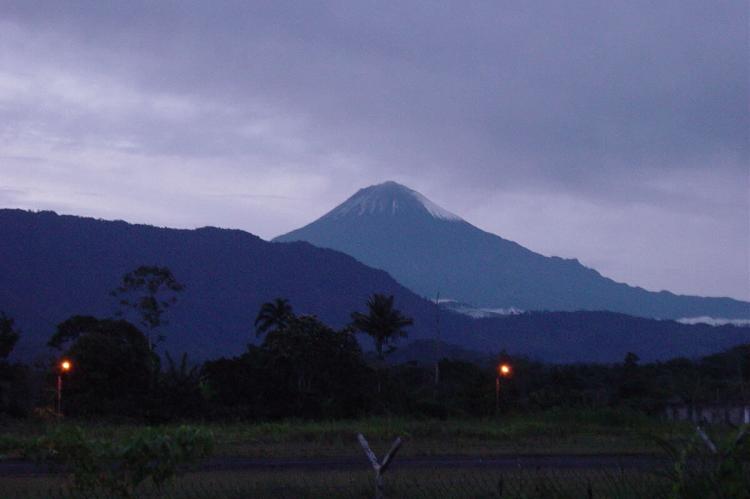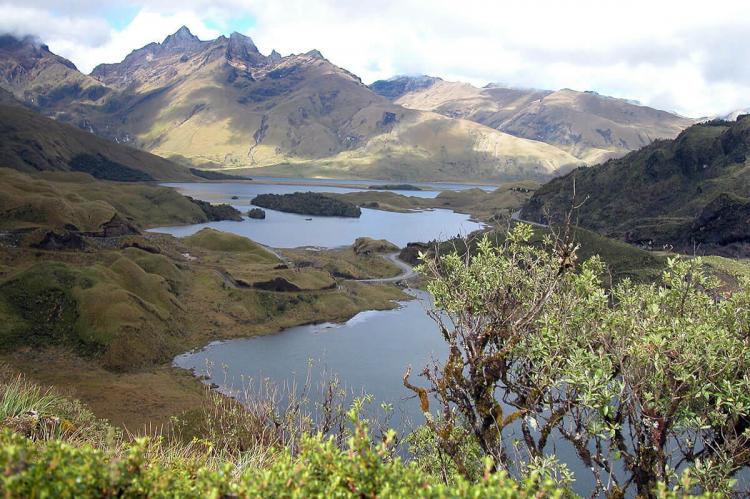Sangay Volcano: Sangay National Park (Ecuador)
The Sangay volcano is located within Sangay National Park in central Ecuador, which contains one of the world’s most complex ecological environments, including a rare combination of grasslands, rainforests, and other fragile habitats.
Sangay Volcano
The Sangay volcano (also known as Macas, Sanagay, or Sangai) is located in central Ecuador within Sangay National Park.
Sangay is an active stratovolcano that, geologically, marks the southern boundary of the Northern Volcanic Zone. Its high activity level is due to its straddling two major pies of crust.
Lying at the eastern edge of the Andean Cordillera, Sangay was formed by volcanic processes associated with the subduction of the Nazca Plate under the South American Plate at the Peru-Chile Trench.
Sangay erupted at least eleven times during the Holocene epoch. Its most recent eruption began on March 26, 2019, and it has remained in continuing eruption status since October 2021. An eruption marked as "continuing" does not always mean persistent daily activity but indicates at least intermittent eruptive events without a break of three months or more.
Due to its remoteness, Sangay hosts a significant biological community. Since 1983, the volcano and its environment have been protected as part of Sangay National Park.
Sangay National Park
Sangay National Park is located in Ecuador's Morona Santiago, Chimborazo and Tungurahua provinces and covers 270,000 ha (667,000 acres). It contains two active volcanoes, Tungurahua and Sangay, and one extinct volcano, El Altar (Kapak Urku).
With its outstanding natural beauty and two active volcanoes, this World Heritage Site illustrates the entire spectrum of ecosystems of Ecuador. These include:
-
glacial and volcanic ecosystems
-
cloud forests
-
wetlands
-
lakes
-
fragile moorlands (páramos)
-
highland grasslands
Geologically, this area is significant due to the Sangay Volcano, one of the more active volcanoes in the world.
The altitudinal range of the park extends from 900 to 5,319 m (2,950 to 17,450 ft) above sea level. The peaks of the park's three volcanoes are as follows:
-
Tungurahua (5,016 m or 16,456 ft)
-
Sangay (5,230 m or 17,158 ft)
-
Altar (5,319 m or 17,450 ft)
The National Park also provides significant habitat for rich flora and fauna, including many threatened species such as the Mountain Tapir and the Spectacled Bear.
In addition, the forests are home to the giant otter, jaguar, ocelot, margay, Brazilian tapir, white-tailed deer (Odocoileus virginianus ustus), little red brocket deer and Northern pudu. Furthermore, the cougar and pampas cat have been recorded in the park as well as about 300 - 400 bird species.
Sangay National Park contains one of the world's most complex ecological environments, including a rare combination of grasslands, rainforests, and other fragile habitats.
The park also includes a vast system of wetlands with 327 lakes, covering a surface of 31.5 sq km (12.2 sq mi), protecting and generating local, national and regional environmental services.
In addition, the park contains one of the largest areas of páramo (montane grassland vegetation) occurring in Ecuador.





